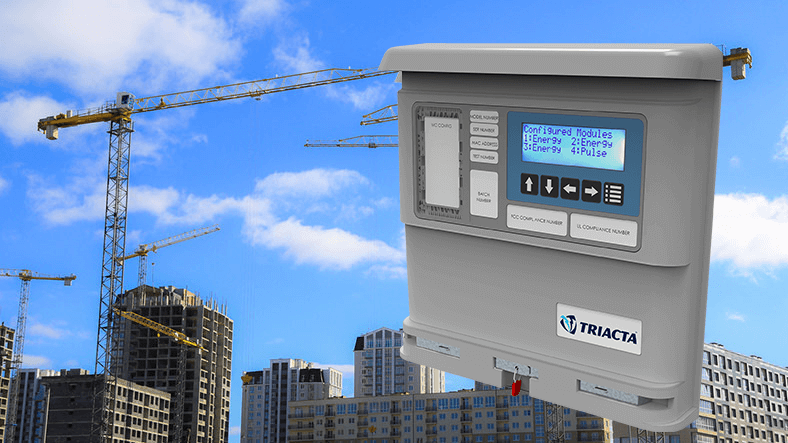In many electrical submetering projects, particularly new construction deployments, it's advantageous to divide meter installation into two distinct stages — electrical tie-in and meter activation. The electrical tie-in stage includes all electrical trade-related work, followed by meter activation and commissioning later (often months later).
Modular Meter Design = Ultimate Install Flexibility
The GATEWAY's unique design facilitates this 2-stage approach, allowing each part of the meter installation to be done at different times, at different pay scales, and by an appropriately skilled person.
In regulated markets, additional benefits are realized years later where the metrological components of the meter can be temporarily and safely separated from the electrical components for re-verification and resealing — without engaging in costly power shutdowns.
Three Primary Meter Components
Each Triacta GATEWAY meter consists of three primary components: a Meter Base, Meter Head, and Meter Enclosure (see diagram).

This distinctive design allows the GATEWAY Meter Base to be installed and all necessary electrical connections safely terminated when electrical trades are scheduled for on-site work. The dust-proof GATEWAY Meter Enclosure protects these connections until the GATEWAY Meter Head is deployed by non-electrical trade technicians at a later date.
Stage 1: Meter Base Installation and Electrical Tie-In
The GATEWAY Meter Base handles all electrical connectivity for the device, including control power, up to two reference voltages, and terminals (or cable harnesses) for landing CTs between the Meter Base and the loads being monitored.
By design, CTs are automatically shorted until the GATEWAY Meter Head is inserted — allowing all electrical work to be completed safely.

Stage 2: Meter Head Installation and Activation
The GATEWAY Meter Head, which snaps into the Meter Base, contains the system's active metrology and computing platform. It can be programmed to suit the intended metering application off-site by Triacta or 3rd-party technicians. The Meter Head can also be sealed by authorized testing and verification labs according to jurisdictional protocols.
Following off-site configuration and/or sealing, the Meter Head is easily installed by removing the Meter Enclosure, inserting the Meter Head, and replacing the Enclosure. Inserting the Meter Head will automatically and safely open the meter and CT circuitry. The device is now ready for commissioning by Triacta or other qualified service providers.

Meter Re-Verification and Re-Sealing
The GATEWAY Meter Head can be easily (and safely) removed for meter re-verification and resealing as required by jurisdictional authorities. This can be done without engaging electrical tradespersons or interrupting a building's electrical service.
For a deeper dive on how the GATEWAY meter keeps energy data accurate, safe and secure, see Electrical Submeters and Security of Your Building's Utility Data.








